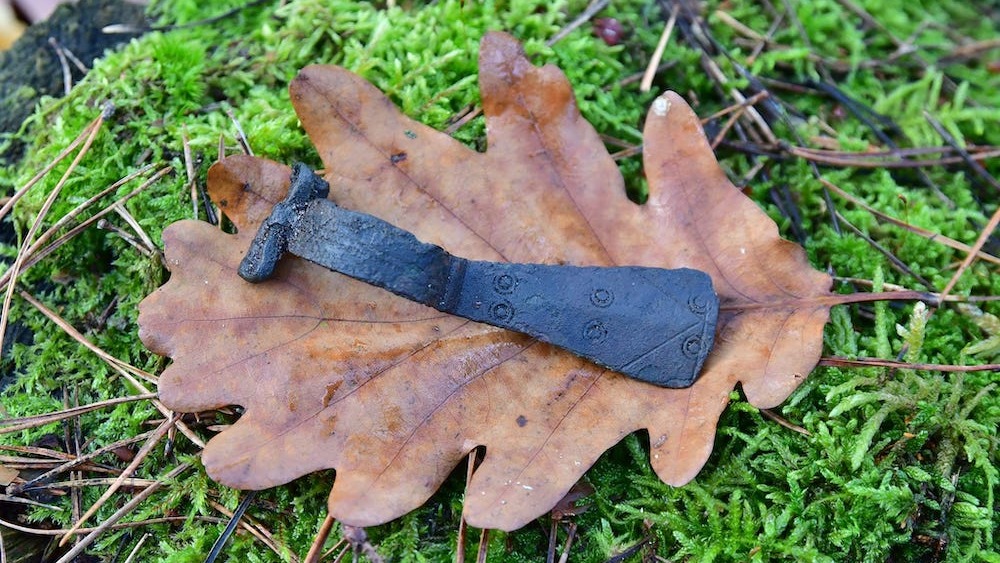3,500-year-old axes potentially used for 'cult practice' discovered in Polish forest
Five axes found in Poland date to 3,500 years ago, and may have been used as either tools to chop wood or for sacrificial purposes.

A metal detectorist in Poland has found five Bronze Age axes buried in a forest. Archaeologists suggest that the artifacts may have been used to either chop wood or for cult purposes.
Denis Konkol was exploring a heavily wooded area in Kociewie, a region in northern Poland, when his metal detector started beeping. After digging about 8 to 12 inches (20 to 30 centimeters) into the soil, he unearthed the metal tools, according to the Miami Herald.
Officials from the Starogard Forest District announced the "sensational discovery" on Nov. 27 in a translated Facebook post.
Related: 'Giant' 300,000-year-old hand ax found in England may have been used for prehistoric butchery
Archaeologists analyzed the five axes and estimated that they're about 3,500 years old, according to a translated article on Science in Poland, a Polish news site.
"These items were quite rare in these lands," Igor Strzok, the Pomeranian provincial conservator of monuments, told Science in Poland.

Piotr Klimaszewski, head of the Department of Archaeological Monuments, described the items as "Tautušiai type axes" — a tool with a slender neck and semi-circular blade that's linked to Tautušiai, a village in Lithuania. The tools were likely used for "chopping wood, cutting or fighting," officials wrote in the Facebook post.
Get the world’s most fascinating discoveries delivered straight to your inbox.
However, it's possible that the axes may have been used as part of a "cult practice" or "sacrifice," Klimaszewski added. But more than likely they were "probably a deposit related to trade," he told Science in Poland.
In addition to the tools, archaeologists found a 2,000-year-old fibula (a small brooch — not to be confused with the leg bone of the same name) — which was used to fasten clothing, according to the Miami Herald.
Researchers aren't sure how the artifacts wound up in the forest, adding that further research is required to fully understand their history. But the team added that they "were genuinely amazed at how great condition [the axes] have been preserved."
Jennifer Nalewicki is former Live Science staff writer and Salt Lake City-based journalist whose work has been featured in The New York Times, Smithsonian Magazine, Scientific American, Popular Mechanics and more. She covers several science topics from planet Earth to paleontology and archaeology to health and culture. Prior to freelancing, Jennifer held an Editor role at Time Inc. Jennifer has a bachelor's degree in Journalism from The University of Texas at Austin.


